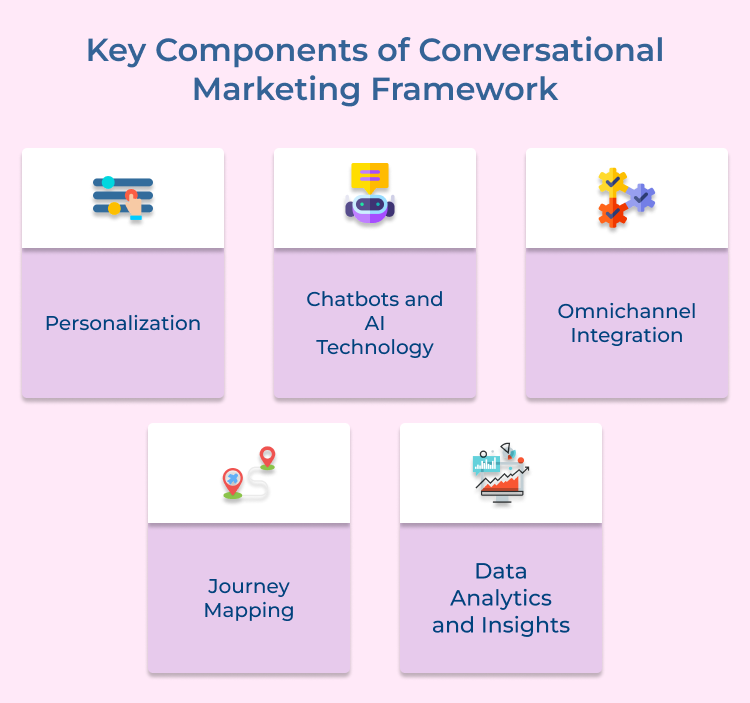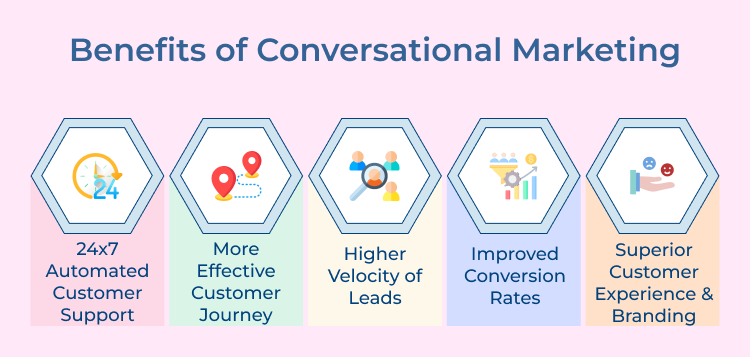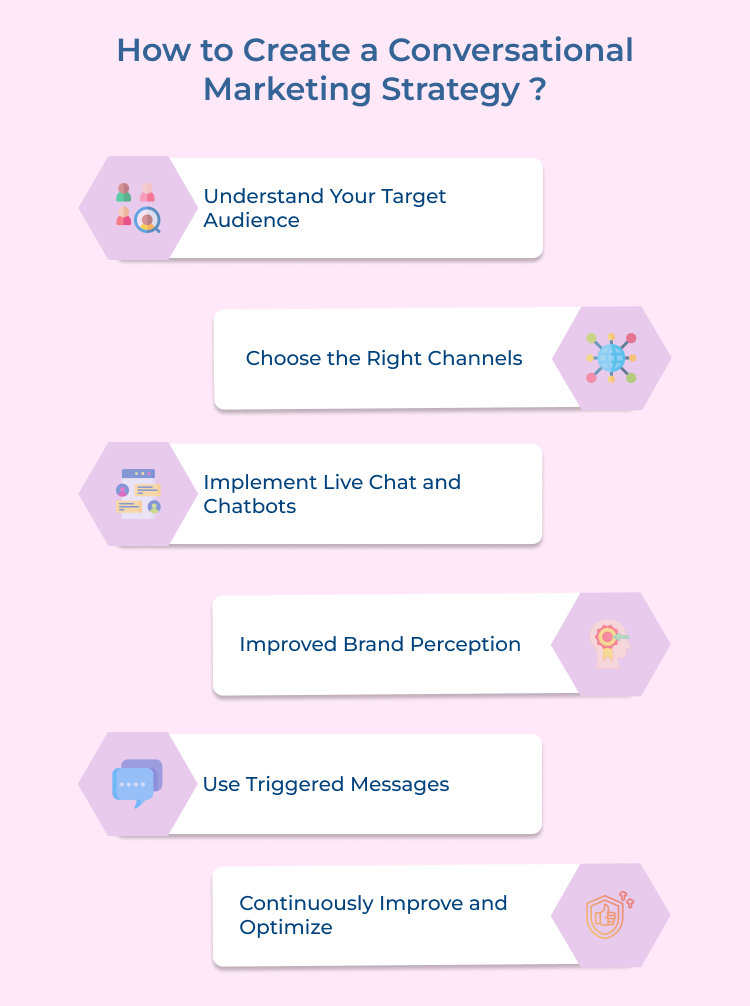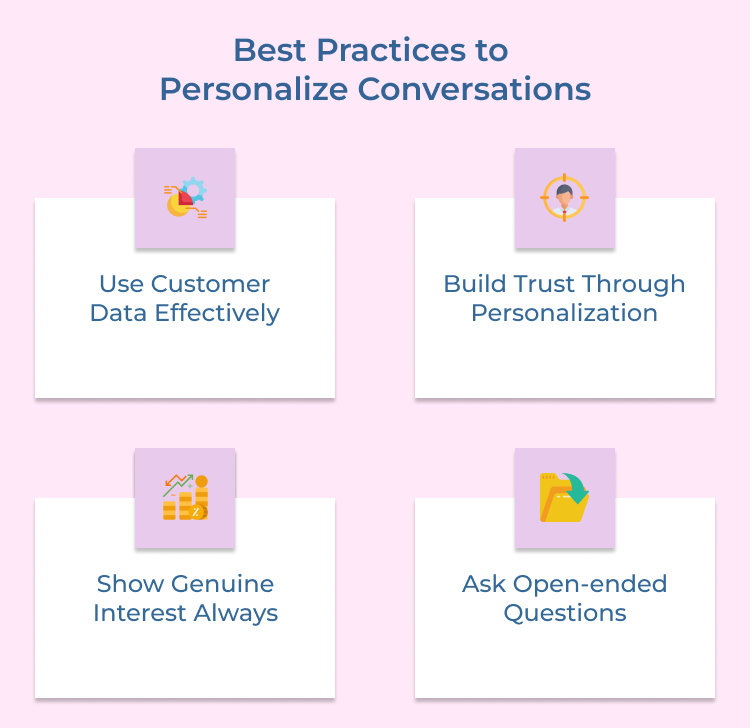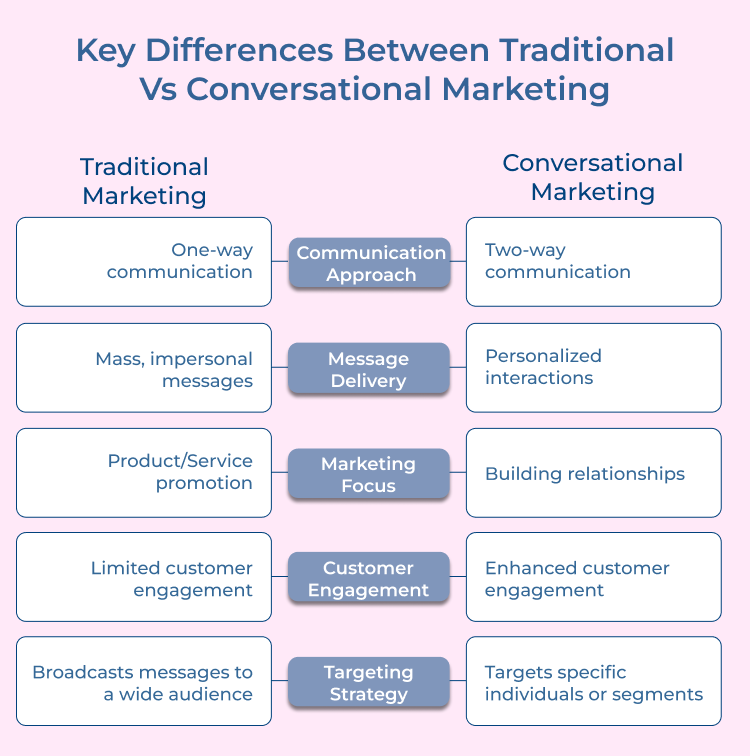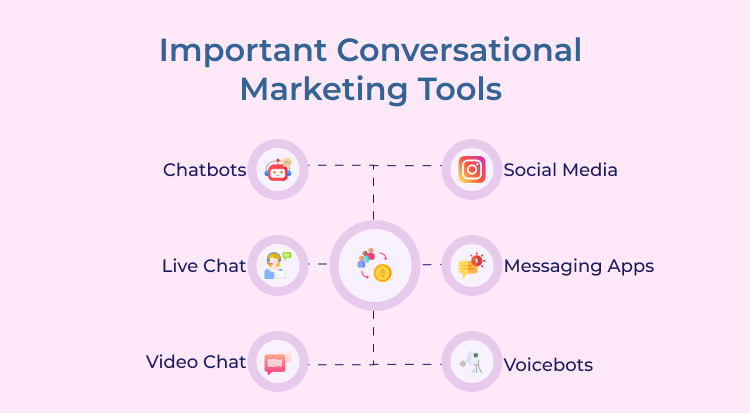Chatbots
Chatbots are the most common form of conversational marketing tools you see everyday. They’re automated AI-powered tools that communicate with customers through text or voice. Chatbots provide assistance to customers in a personalized manner, saving time and resources for businesses.
Live Chat
Live chat allows businesses to connect with customers while providing instant assistance. Live chat is usually available on a website or app. Customers can type their queries and an agent will respond immediately. Live chat is an effective way to provide personalized customer service, and it also helps businesses build stronger relationships with their customers.
Video Chat
Video chat is an excellent tool for businesses that want to provide a more personal touch to their customer service. The tool allows customers to have real-time conversations with their representatives. Video chat is beneficial for customers who need help with complex issues or those who prefer a face-to-face interaction.
Social Media
Social media platforms such as Facebook and Twitter are great conversational marketing tools for businesses. Customers can interact with businesses through social media, ask questions and give feedback. It is essential for businesses to be active on social media platforms and provide timely responses to customer queries.
Messaging Apps
Messaging apps such as WhatsApp and Facebook Messenger have become more popular for business-to-customer communication. Businesses respond to customer queries instantly using messaging apps and it also serves as a platform for businesses to send targeted promotions to customers.
Voicebots
Voicebots are similar to chatbots, but they use voice recognition technology to communicate with customers. Voicebots can be integrated with smart speakers such as Amazon Echo or Google Home to provide instant responses to customer queries. They can also be used for simple transactions such as changing a booking or placing an order.
Examples of Conversational Marketing
While the concept of conversational marketing may seem abstract, there are plenty of real-life examples that showcase its effectiveness.
Let’s take a look at some of these examples and see how conversational marketing has been implemented successfully by different brands.
Amtrak
Amtrak, the national railway service in the United States, has embraced conversational marketing through their “Julie” chatbot. Julie allows customers to ask questions, receive immediate responses and make train reservations through Facebook Messenger. The chatbot even sends real-time updates about delays or changes in the schedule, making it a valuable tool for Amtrak passengers.
Domino’s Pizza’s Chatbot
Domino’s Pizza embraced conversational marketing by introducing their chatbot named “Dom” on various messaging platforms. Customers can order pizza by simply engaging in a conversation with the chatbot, which simulates a human-like interaction. Dom asks questions to customize the order and provides real-time updates on the delivery status. By integrating conversational marketing, Domino’s Pizza simplifies the ordering process and creates a delightful customer experience.
1-800-Flowers
1-800-Flowers, an online florist, uses conversational marketing to simplify the ordering process and enhance customer satisfaction. They have integrated their ordering system with popular messaging platforms, such as Facebook Messenger, Amazon Alexa and Google Assistant. Customers can now interact with the chatbot, seeking advice for gift ideas, tracking deliveries, and making purchases seamlessly within the conversation.
Leverage Conversational Marketing for Exceptional CX
Conversational marketing might not be the ultimate tool but adding it to your business will enhance customer experience and achieve better results. By providing instant and personalized interactions, businesses deliver exceptional customer experiences that build loyalty.
What I find is, leveraging conversational marketing helps brands meet the growing expectations of customers. Implementing chatbots, live chat and continuous optimization are key steps to ensure exceptional CX. Remember, customers crave personalized and instant interactions – it’s up to businesses to fulfill these expectations as well as build meaningful connections with their audience.

